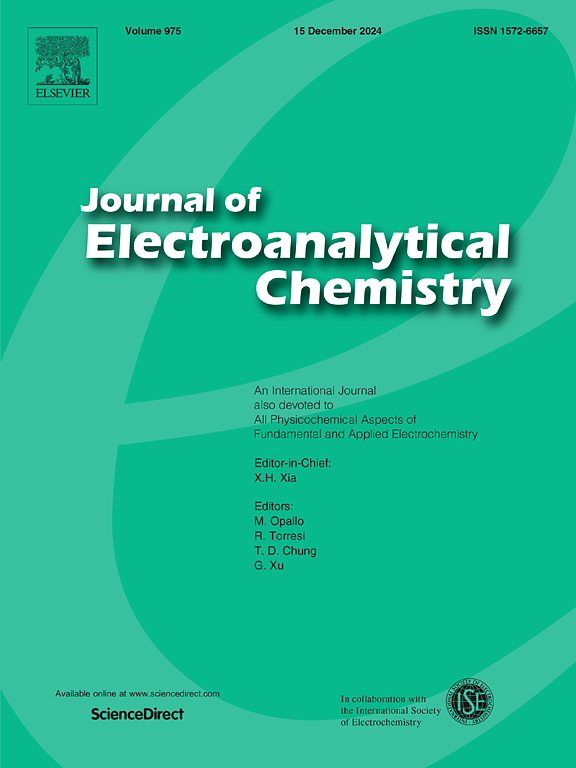Ultra-sensitive detection of dopamine using oxygen plasma-treated Ti3C2Tx-modified carbon electrodes: DFT and experimental investigations
IF 4.1
3区 化学
Q1 CHEMISTRY, ANALYTICAL
引用次数: 0
Abstract
Dopamine (DA) plays a critical role in various neurological disorders, including Parkinson's disease and schizophrenia, making its accurate and ultra-sensitive detection crucial for early diagnosis and treatment. In this study, a novel electrochemical sensor for DA detection was developed using monolayer Ti3C2Tx Mxene material treated with oxygen plasma. The oxygen plasma treatment significantly enhanced the surface activity and electronic transport capabilities of Ti3C2Tx, resulting in an ultra-low detection limit of 0.005 nM for DA. Electrochemical tests demonstrated the sensor's excellent sensitivity, stability, and performance. To further elucidate the underlying mechanisms of enhanced electrochemical performance, density functional theory (DFT) calculations were employed to investigate the impact of oxygen plasma treatment on the electronic structure of Ti3C2Tx. The DFT results revealed that the oxygen plasma treatment notably increased the number of active sites by introducing more oxygen-terminated functional groups on the surface of Ti3C2Tx. These oxygenated functional groups acted as catalysts, lowering the activation energy required for DA electrochemical reactions. Additionally, the oxygen plasma treatment effectively reduced the lattice constant of Ti3C2Tx, improving its internal electronic transport properties and thus enhancing its conductivity. The theoretical studies are in strong agreement with the experimental results, providing a clear understanding of the interaction between DA molecules and the oxygen-functionalized Ti3C2Tx surface. This research highlights the potential of oxygen plasma-treated Ti3C2Tx as a high-performance electrochemical sensing material and offers new perspectives for the development of sensitive biosensors.

求助全文
约1分钟内获得全文
求助全文
来源期刊
CiteScore
7.80
自引率
6.70%
发文量
912
审稿时长
2.4 months
期刊介绍:
The Journal of Electroanalytical Chemistry is the foremost international journal devoted to the interdisciplinary subject of electrochemistry in all its aspects, theoretical as well as applied.
Electrochemistry is a wide ranging area that is in a state of continuous evolution. Rather than compiling a long list of topics covered by the Journal, the editors would like to draw particular attention to the key issues of novelty, topicality and quality. Papers should present new and interesting electrochemical science in a way that is accessible to the reader. The presentation and discussion should be at a level that is consistent with the international status of the Journal. Reports describing the application of well-established techniques to problems that are essentially technical will not be accepted. Similarly, papers that report observations but fail to provide adequate interpretation will be rejected by the Editors. Papers dealing with technical electrochemistry should be submitted to other specialist journals unless the authors can show that their work provides substantially new insights into electrochemical processes.

 求助内容:
求助内容: 应助结果提醒方式:
应助结果提醒方式:


